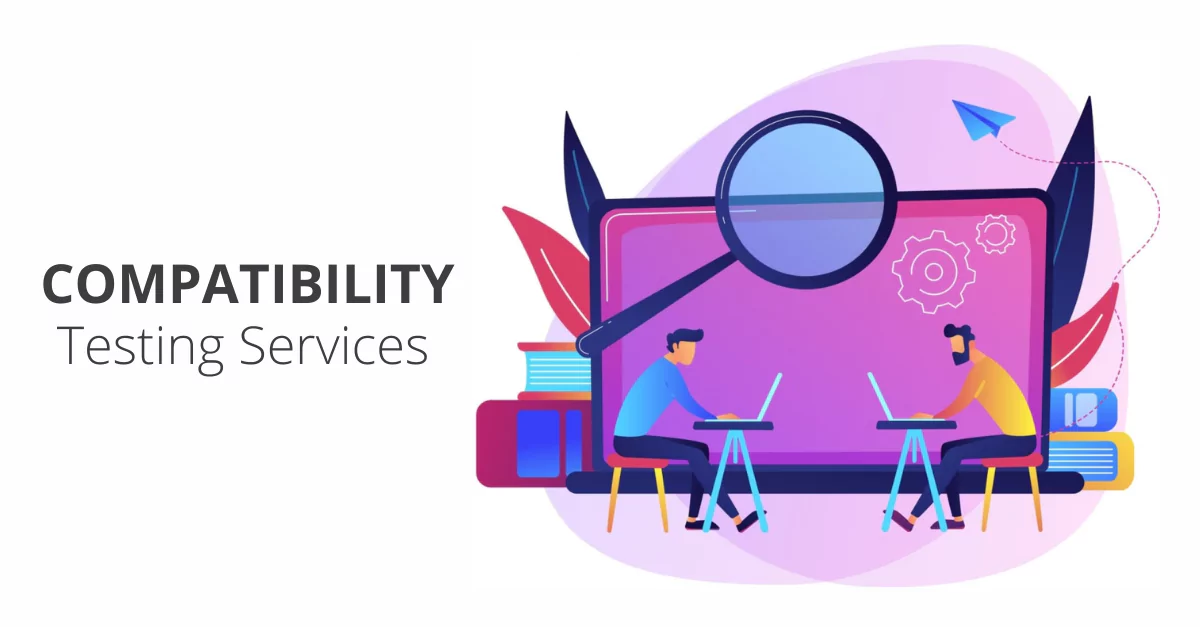Compatibility testing guarantees that an app works true to form across devices. Manual testing is a way to deal with programming testing that includes a human analyzer. They execute experiments, without the use of any automated devices. It permits analyzers to confirm the app’s conduct by meeting the client’s necessities.
In this article, we will check how to direct compatibility testing in manual testing.
Step 1: Characterize Compatibility Needs
Before starting, it is fundamental to characterize the needs of the app. The application’s functional necessities help get these requirements. The accompanying viewpoints should cover
- Working System Compatibility:
Recognize the working frameworks that the application will run on.
- Program Compatibility:
Recognize the browser that the application will run on.
- Gadget Compatibility:
Compatibility testing services distinguish the devices that the application will run on. Use a tool to ensure the app runs on every browser.
- Network Compatibility:
Distinguish the organization setup that the application will use.
- Equipment Compatibility:
Recognize the equipment setup that the application will run on.
Step 2: Ready Test Plan
The test plan is a report that frames the techniques, goals, and extent of the testing process. It should cover the accompanying perspectives:
- Test goals:
Check the targets of the process. It should guarantee that it meets the prerequisites of the clients.
- Test approach:
Characterize the method that you will continue in testing.
- Test scope:
Measure the extent of the compatibility testing in manual testing processes.
- Experiments:
Set up a rundown of experiments that you will execute during testing.
- Test information:
Process the test information that you will use in testing the UI.
- Test climate:
Establish a testing environment that you will use for testing.
Step 3: Execute Experiments
The test execution process includes executing the experiments across various designs. You can follow the accompanying tips to guarantee viable test execution:
- Genuine gadgets and programs:
This assists in distinguishing any gadget or program’s explicit issues.
- Cover various situations:
Any issues will be distinguished that might influence the application’s ease of use.
- Use various arrangements:
To guarantee that the app meets the necessities, use various designs to execute the tests. And to make sure that web browser compatibility testing tools are.
- Record test results:
Record the test results for each experiment, including any issues or imperfections.
- Check test results:
Confirm the test results to guarantee their exactness and dependability.
Step 4: Report and Resolve Issues
After executing the compatibility testing in manual testing, now is the ideal time to report and determine any issues. You can follow the accompanying tips to guarantee compelling issues announcing and goals:
- Characterize issues:
Order the issues in light of their seriousness and effect.
- Give itemized portrayals:
Give nitty gritty depictions of the issues, including their side effects.
- Incorporate screen captures and logs:
Include screen captures and logs to help with portrayals of your issue.
- Advancement group:
Work together with the group to determine the issues, giving them standard updates.
- Retest settled issues:
Again, test issues to guarantee fruitful goals and outcomes.
Step 5: Conclude the Test Report
Now is the right time to finish the test report, which will give a synopsis of the testing system and its results. The test report should cover the accompanying viewpoints:
- Test Goals and Degrees:
Sum up the test targets and extent of the testing process.
- Test approach and technique:
Calculate the test approach and procedure continued in the testing system.
- Test results:
Give a synopsis of the experimental outcomes, including the number of experiments executed.
- Suggestions:
Suggest the areas of progress and the future extent of the process.
- Decision:
Provide an end to the viability and skill of compatibility testing in manual testing processes.
How do Compatibility testing services conduct Manual Testing?
Compatibility testing services lead manual testing by following an efficient and organized way. They guarantee that product applications are viable with various conditions.
Here are the key advances engaged in directing manual compatibility testing:
Step 1: Analyze Compatibility Requirements
The most important phase in compatibility testing in manual testing is to examine the necessities. It characterizes the base framework and climate arrangements.
Step 2: Develop Test Plans and Test Cases
The test plan frames the testing approach, strategy, and targets. Test cases should cover various arrangements and conditions.
Step 3: Execute Test Cases
In the wake of fostering the test plan and experiments, the later stage is to execute the experiments. Analyzers should use various setups and conditions to execute the experiments. They ought to record the experimental outcomes, including any issues.
Step 4: Report and Resolve Issues
They characterize the issues given their seriousness and effect. They also focus on their goal in light of their criticality. Analyzers give point-by-point portrayals of the issues.
Step 5: Retest Resolved Issues
Tester should retest the settled issues to guarantee their effective goal. Analyzers ought to refresh the experimental outcomes during compatibility testing in manual testing.
Step 6: Finish the Test Report
The analyzers ought to settle the test report after the completion. The test report should give a rundown of the testing system and its results.
What are the Best Web Browser Compatibility Testing Tools to use?
There are a few web browser compatibility testing tools accessible for manual testing that can assist you. Here are the best internet browser similarity testing apparatuses for manual testing:
- Browser Stack:
It’s one of the most well-known internet browser testing tools used. It permits you to test your site on more than 2,000 programs and gadgets. It offers a scope of testing highlights like nearby testing, live testing, and screen capture correlation.
- Sauce Labs:
This tool empowers you to test your site on many programs and platforms. It gives constant testing, robotized testing, and investigating abilities for complete testing.
- CrossBrowserTesting:
It permits you to test your site worth 2,000 programs and gadgets. It offers a scope of elements like live testing, screen capture correlation, and video recording. All of these are necessary to execute compatibility testing in manual testing.
- Browserling:
This tool permits you to test your site on various programs and stages. It offers live testing, screen capture examination, and investigating devices.
- LambdaTest:
It’s a cloud-based testing tool that empowers you to test your site on more than 2,000 programs and gadgets. It provides continuous testing, robotized testing, and troubleshooting capacities.
Conclusion
Compatibility testing in manual testing guarantees that a product application works true to form across various conditions. It permits analyzers to confirm the app’s conduct, guaranteeing that it meets the client’s necessities. By following the above advances and tips, you can test and guarantee quality and convenience.
FAQs
- How is manual compatibility testing different from automated compatibility testing?
Human analyzers perform manual testing, while automated tools perform robotized testing. Manual testing is more appropriate for exploratory testing and recognizing convenience issues. Robotized testing is better for relapse testing and distinguishing useful issues.
- How can I determine the scope of manual compatibility testing?
The extent of manual testing is not set in stone by examining the compatibility necessities. Requirements only characterize the base framework and climate setups.
- What are the deliverables for compatibility testing in manual testing?
The expectations of manual testing incorporate a far-reaching test report. This includes the experimental outcomes, proposals for upgrades, and the effect of the testing system.





